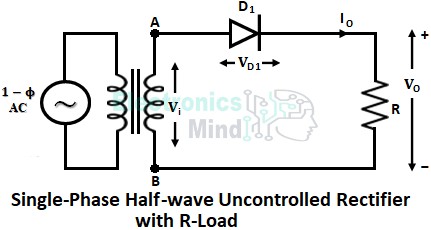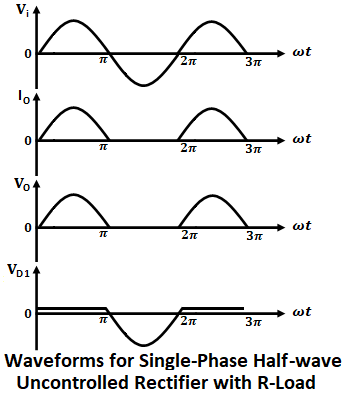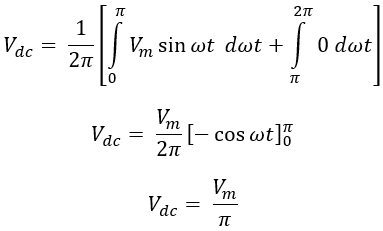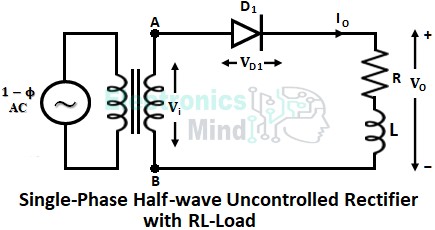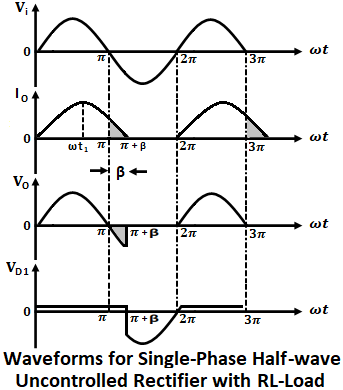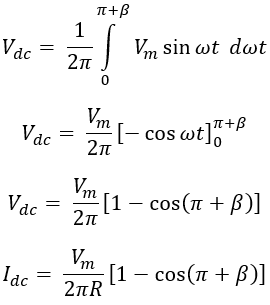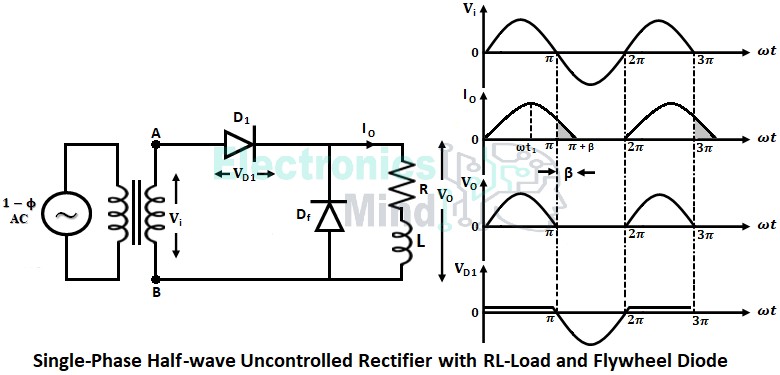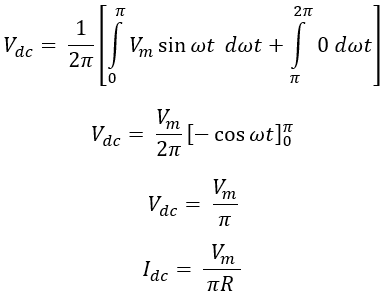A rectifier circuit that employs only diodes as the switching device is called an Uncontrolled rectifier. In an uncontrolled rectifier, the average output voltage is fixed and cannot be varied for a given load and a given ac supply. Since there is no triggering terminal to a diode, the conduction and commutation of the diode in uncontrolled rectifiers depend upon circuit conditions.
Uncontrolled rectifiers are divided into single-phase and three-phase. The single-phase uncontrolled rectifiers are again divided into half-wave and full-wave uncontrolled rectifiers. In a half-wave rectifier only either the positive or negative half-cycle of ac input is rectified, whereas, in a full-wave rectifier, both positive and negative half-cycles are rectified. In this article let us see about a single-phase half-wave uncontrolled rectifier with R and RL load.
Single-Phase Half-Wave Uncontrolled Rectifier with R-Load:
The circuit diagram for a single-phase half-wave uncontrolled rectifier supplying power to a resistive load is shown below. The circuit is supplied by a single-phase transformer whose secondary represents the rectifier’s circuit. A single-phase half-wave uncontrolled rectifier circuit uses only one diode that converts half of the ac input cycle into dc.
When the supply source is turned ON, the positive half cycle of ac input starts. During the positive half cycle of the ac input, point A will become positive with respect to point B. Due to this, the diode D1 goes into forward biased condition because the anode terminal of the D1 is made positive and the cathode terminal is made negative.
We know that a diode in a forward-biased condition will act as a closed switch i.e., it allows current to flow through it. Thus the resistive load gets connected across the supply and the load current starts flowing in the circuit from point A to B throughout the positive half cycle.
Now when the negative half cycle of ac input starts, point B will become positive with respect to point A. In this condition, the diode D1 will be reverse-biased because the anode terminal of the diode is made negative and the cathode terminal is made positive. When a diode is reverse-biased it acts as an open switch and blocks the flow of current through it.
Therefore, during the negative half cycle of ac input, the load gets disconnected from the supply. Thus no load current flows except a very small leakage current which can be neglected and no voltage is developed across the load until the next positive half cycle. The waveforms for input voltage VI, output voltage Vo, output current Io, and the voltage across the diode VD1 are shown below.
In the above waveforms, we can see that load current Io flows from 0 to π i.e., during the positive half cycle, and Io will be zero from π to 2π i.e., during the negative half cycle. Since the load is resistive type, the load current or output current Io will be in phase with the output voltage Vo i.e., the current waveform will be a replica of the voltage waveform.
The average value of the output voltage of the rectifier can be calculated as follows,
Since output voltage and current are in phase due to resistive load. Both output voltage and current are related by I = V/R. Consequently, the average output current is given by,
Single-Phase Half-Wave Uncontrolled Rectifier with RL-Load:
In the above circuit, we have seen a half-wave uncontrolled rectifier with a resistive load. Now let us see the operation of a half-wave uncontrolled rectifier with RL load (resistive-inductive load). The circuit is similar to a rectifier with an R-load except the load consists inductor (L) in series with the resistor (R) as shown below.
Due to the inductive nature of the load, the load current Io will not be in phase with the voltage Vo rather it lags behind the voltage. The waveforms for load voltage and current with RL-load are shown below.
It can be seen that,
- The load current Io rises from zero to peak at ωt1 which lags the voltage peak due to load inductance. During the time period from 0 to ωt1 the load inductor stores energy in it.
- Once the load current reaches its peak value it starts to decay and load voltage Vo becomes negative at ωt = π because the load current Io doesn’t reach zero with voltage. Both source and inductor supply energy to R during the time period from ωt1 to π.
- The load current Io continues to decay and reaches zero at ωt = (π + β), Vo remains negative until Io reaches zero. The energy is supplied by the inductor to both source and resistor from π to (π + β).
- At ωt = β current and voltage reach zero and the diode is reverse-biased disconnecting the load from the supply. The load gets disconnected until the next positive half cycle of ac input.
The average value of the output voltage and current with RL-load can be calculated as,
From the above equation, the average output voltage Vdc can be increased by making β = 0. This can be done by connecting another diode across the load called a freewheeling diode Df as shown in the below figure.
The above-modified circuit will transfer current due to inductive load from diode D1 to freewheel diode Df during the period π to (π + β). Due to this a negative voltage doesn’t appear across the load. The value of average output voltage and current with a freewheeling diode is given as,
Disadvantages of Single-Phase Half-Wave Uncontrolled Rectifier:
- Since the diode conducts only for a half-cycle the efficiency of the rectifier is less (<50%).
- The ripple factor is very high in a half-wave rectifier.
- Since only the positive half cycle of ac reaches the secondary winding of the transformer. The unidirectional current will saturate the secondary winding resulting in a low transformer utility factor.

